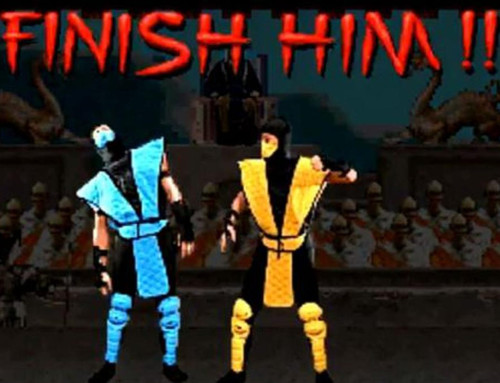My father taught me how to play poker and blackjack at a fairly early age. My brothers and I would play with him, sometimes winning, but mostly losing. To get started, he would ask us to go into his bedroom to get his coin jar. He dropped his pocket change in that jar at the end of every day. We would use those coins to place bets while playing.
We got to keep whatever we won, which was usually nothing as our father was quite good at poker. However, when we were done, he usually had me count up all the coins for him to get a total. Typically, there was at least a few hundred dollars’ worth of coins, if not considerably more.
We would then take those coins to the bank to convert to cash or place in the bank account. It’s important to note that we were not wealthy. Raising three hungry boys who each played in every sport imaginable was not cheap for a single father. Having a few hundred dollars was a great day. We would use it to go out to eat at a nice restaurant, help pay for a short vacation, or buy new clothes as much of my wardrobe were hand-me-downs from brothers and cousins.
It’s easy to overlook pocket change and believe it’s irrelevant in value, but when added up over numerous months or a year, it provided enjoyment and great memories with my father and brothers. And this is the focal point of what I want to discuss in this blog post. The importance of the small, seemingly insignificant things such as incremental improvements.
In both the martial arts world and the fitness world, one of the biggest factors in people giving up is the expectation of quick results. I’ve had people sign up to do fitness training with me to lose weight for an upcoming event such as a wedding. Wanting to lose thirty pounds of excess weight is normal, but doing it in a few months is unrealistic.
The normal amount of body fat to lose in a week is one to two pounds. And that is if the person works hard and follows both the workout routine and nutrition advice. People watch reality tv shows about losing weight and believe losing that much weight that quick is realistic. It’s not. It’s also not safe and will typically result in gaining all the weight back, and more, shortly after.
Grunting, or really any amount of audible exhaling, during the final repetition or two will give about two percent more strength. Notice I said the final one or two reps of a heavy set. Not every rep of every exercise as loud as you can. I’m looking at you, Mr. extremely loud and obnoxious gym bro. Two percent may seem like a small number, but this two percent is what separates first place from second place in most competitions at the elite levels.
This two percent is important in martial arts as well, albeit not as easy to record with numbers like you can in the gym or timed events. At the beginner ranks, the improvements are generally noticeable. From falling down upon kicking a heavy bag to knocking that same heavy bag around with some stability can happen in the course of one class with proper instruction. As we move up in rank, however, these improvements are much smaller and less noticeable.
Due to this, many students begin to drop out of classes in these intermediate ranks. Most students will see results as simply, “it works” or “it didn’t work”. Spotting the minor improvements becomes nearly impossible from the student’s standpoint. As an instructor though, it’s generally pretty clear. This is due to two things. One, we are trained to spot the details as we know how important those tiny details are. And two, we can see it from the outside looking in.
As instructors we can feel that extra two percent of power hitting the target or seeing the slight balance improvements when throwing these techniques. It’s not always easy to explain to students how important these tiny details are. When I say minor, I’m talking very minor. For instance, when it comes to joint locks, position and angles of a technique can go from struggling to working well to working with ease, with less than two inches of movement.
That joint lock may still work much of the time on most people if it’s off a little bit. But the small details, if adjusted properly, will have a much higher success rate. These same small details are in all martial arts styles. In my Gumdo (sword art) program, most can learn how to swing the sword fairly easily. However, at the lower ranks, if I had a student use a live sword to cut a tatami mat or pool noodle, they would fail miserably on most cuts. The angle at which the blade is swung and the angle of the blade in relation to the spine will determine a successful cut. Those two things take a lot of training, refining and a detailed eye by the instructor.
Striking arts like Taekwondo and Karate styles are heavily based on the details for speed, power and injury prevention. I can teach anyone to throw a basic punch or kick that can generate power in just one class. But the chances of focusing that power into damaging the target and not damaging the person throwing said punch is not high.
Most will injure their knuckles or wrist while falling off balance due to Newtons third law of motion, for every action, there is an opposite and equal reaction. Body structure and understanding biomechanics and kinesiology is essential to understanding the small details of what needs to be trained. If your back foot is just a few inches off the proper alignment, it can be the difference between delivering serious power or losing most of that power.
Beyond the details within the programs and techniques, I find some of the biggest culprits of frustration come from not seeing the incremental improvements in oneself. The improvements early on are noticeable. This is true when learning anything, especially physical improvements. This is, again, why so many students drop out in the middle ranks. The improvements are noticeable in the beginner ranks and motivation comes easily for most because of it.
But the middle ranks are about refining details before moving on to the advanced levels to learn hard techniques with even more refinement of details. These improvements are tough to spot unless you are recording yourself and perpetually comparing your current technique to your beginner technique. From the outside looking in though, especially from the specialized eye of your instructor, the improvements are noticeable.
If you ever found yourself losing motivation in your training, my advice is to record yourself as often as possible when training or performing your material. At least once or twice each rank. Then look back at your early videos and compare them to your current videos. The differences will be extremely apparent when compared to each other. Also note that improvements can come from the consistency of your success and not just improved technique. Anyone can do a technique correctly once, but doing it right every time is what we are trying to achieve.
And lastly, trusting your instructor. We see the improvements you are making. I’ve had many students seemingly not believe me over the years when I tell them they are improving. Part of what students don’t necessarily know is that every time they improve a technique, I make things harder. I often pressure test the students knowing they will fail from time to time. This is how I know where to focus on improvements. If a student were to succeed at everything all the time, then I’m not doing my job and they are not learning anything or improving in any way beyond growing an ego.
To give an example, let’s say a student is working on an armbar joint lock. When the student first learns this new technique, the attacker should be compliant. Allowing the student to succeed at applying the armbar, even if it’s not the best technique. The student will see this as an improvement as they have learned a new technique. From there, the attacker should give increased resistance upon each successful application of the armbar. Now the student will start to see that they can only get the armbar to work about fifty percent of the time.
As the student’s percentage of success goes up to about eighty percent, the attacker should again make it harder. Maybe throwing in a punch as the student attempts to apply the armbar, or maybe a simply counter. This again lowers their success rate. However, with enough practice, that success rate will go up yet again. This process goes on and on forever. Not just for a day or for a rank, but rank after rank the attacker makes things harder to help that student be more successful at applying the technique, even when a lot of resistance is applied.
If I didn’t explain this process to the student, all they would see is that they succeeded early on, then got worse over time before becoming more successful once again. Seeing the perceived backward slide in success rate can be frustrating and lead the student to thinking they are getting worse and deciding to quit. It’s a needed process to be good at something. This is always why I state to students that going up in rank doesn’t necessarily mean learning more difficult techniques. It’s just as much about being more successful at applying old techniques that are useful.
Generally speaking, the learning process follows the same line of progression for people learning a new skill or building strength or losing weight. Assuming the person is starting from zero (no experience in the skill), the person will have noticeable gains/improvements early on. Usually around three weeks if done with good and consistent effort. Followed then by smaller and smaller improvements over the first year. That first year of consistency is the most important to build a strong foundation.
Beyond that first year, most will see a small improvement from time to time, followed by what seems like a regression in skill/results before the next improvement. The two points where people tend to give up, shortly after that first month and shortly after the first year. The issue is that many make the assumption that they have stopped making progress during these two times and they either give up, or they make a big change with the assumption what they are doing isn’t working. This can lead students to changing schools, or in the case of fitness, changing trainers or gyms. While it’s important to adjust your training on occasion, big changes like this are not needed.
One must trust the process, especially if being guided by an instructor, coach or trainer. If you want more detailed information as to why these improvements slow down and sometimes seem like they regress, I’ve written more about this in a previous blog post, Batteries may be included but loyalty isn’t. Essentially, beyond the initial improvements, there is kind of a two steps forward, one step backwards type of process. It’s completely normal and should be expected.
Don’t get discouraged, just keep dropping that pocket change into your jar of skill. It will add up in time!







Leave A Comment